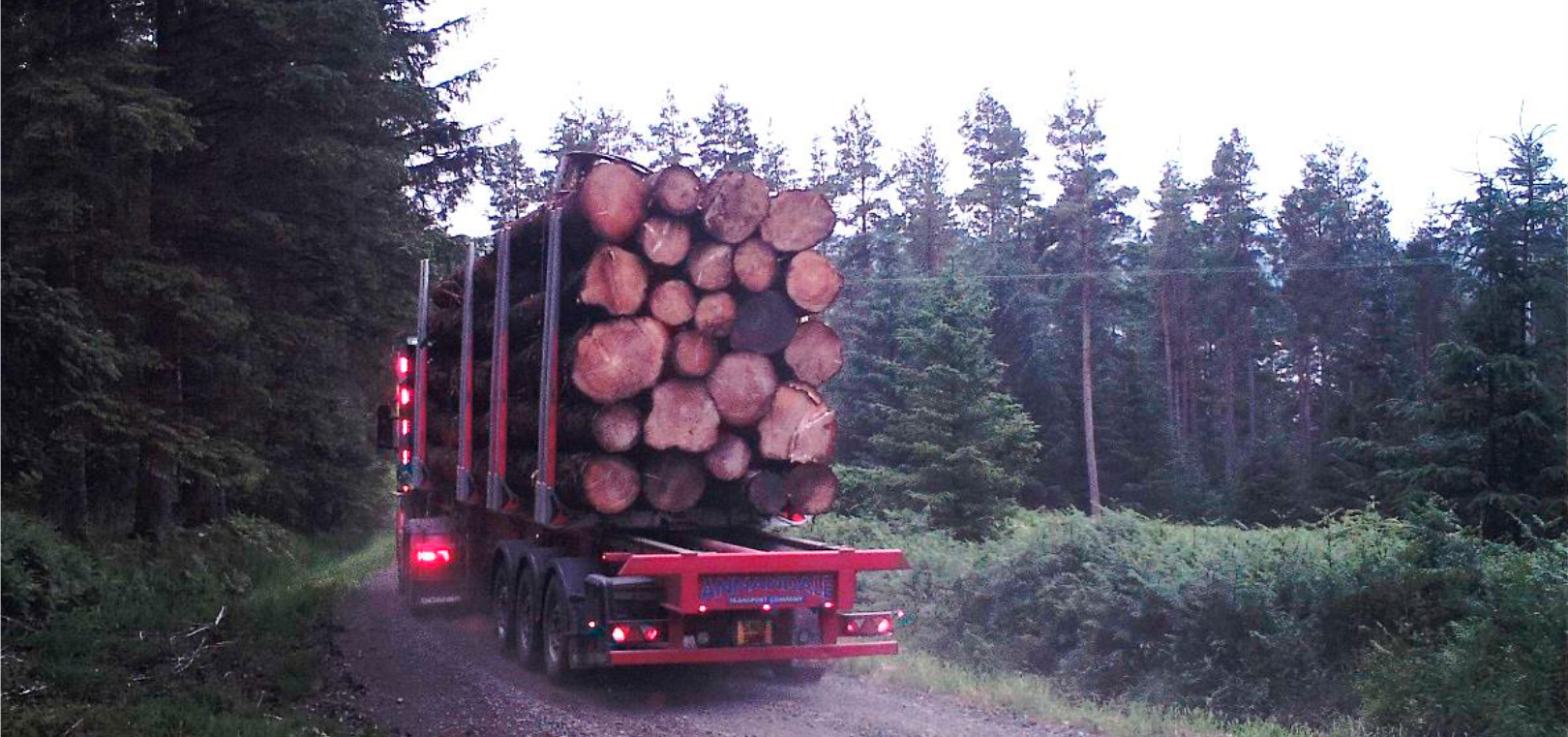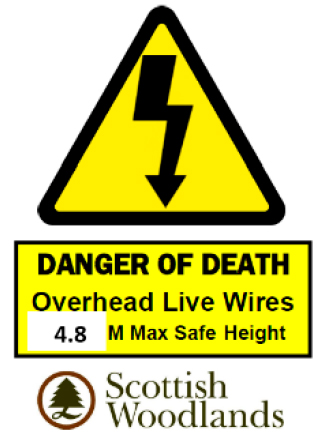Safety Bulletin UAG066
Two damaged goalpost incidents
August 2020
Overhead powerline protecting goalposts damaged twice in the last month
Incident 1
One side of a set of ‘goalposts’ was brought down by an unidentified vehicle or machine. The crossing point was used both by a timber lorry and an excavator on the day the damage occurred.
Incident 2
Involved a timber lorry carrying oversized 4.9m logs. The logs had been lying for some time and had lost weight. The driver had loaded above the bolsters to maximise his weight payload, and with the crane lain on top, exceeded the maximum safe height at the crossing point and brought the goalposts down.
In neither instance were the goalpost damage reported.
All work was suspended on both sites until the goalposts could be repaired.

Incident 2. The image of the timber lorry was captured on an in-forest CCTV camera as it approached the overhead power line crossing point.
Goalposts are set up as a highly visible warning reminder:
- that an overhead power line is crossing the road,
- that there has been a safe maximum vehicle height set by the Network Operator,
- that any vehicle which is higher than the top of the goalpost is at risk of either
- directly contacting the overhead power line
- being close enough to the power line that the electricity will ‘arc’, that is – jump across the air gap, to the vehicle or machine without direct contact.

Every goalpost crossing point will have ‘danger of death’ warning signage, showing the maximum safe vehicle height/the height the goalposts have been set at. This will vary for each crossing point.
All overhead power line crossing points will also be shown on your worksite map.
You must check the height at each crossing-point, and you must know the height of your machine/vehicle, for the configuration you are travelling in or the load you are carrying. If your vehicle height, jib, load, or any attachment is higher than the crossbar, the crossing point must not be used.
See the video showing a series of electrical ‘arching’ incidents and the explosive power of electricity.
The final clip is one of the best illustrations of electricity ‘arching’, in this case to a metal ladder, without the ladder physically touching the powerline. A timber lorry/forwarder crane, machine boom or trailer bolsters would behave in a very similar manner.
Watch Video
Goalposts are easily fixed; any damage should be reported immediately to the FWM. THIS IS FOR THE PROTECTION OF BOTH YOU AND YOUR COLLEAGUES. Failure to report damage to goalposts puts all HGV and other users at risk, as this removes the final highly visible physical warning these goalposts give.
All forestry machinery ‘must’ display an electricity warning sign in the cab, showing the vehicle travel heights.
Scottish Woodlands have produced a range of cab stickers for each major forest machine type. If you do not already have one, contact your Scottish Woodlands Manager.
Download Safety Bulletin
View all UAG Safety Bulletins
Source: Scottish Woodlands